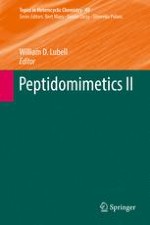
2017 | OriginalPaper | Buchkapitel
Oligooxopiperazines as Topographical Helix Mimetics
verfasst von : Brooke Bullock Lao, Paramjit S. Arora
Erschienen in: Peptidomimetics II
Aktivieren Sie unsere intelligente Suche, um passende Fachinhalte oder Patente zu finden.
Wählen Sie Textabschnitte aus um mit Künstlicher Intelligenz passenden Patente zu finden. powered by
Markieren Sie Textabschnitte, um KI-gestützt weitere passende Inhalte zu finden. powered by